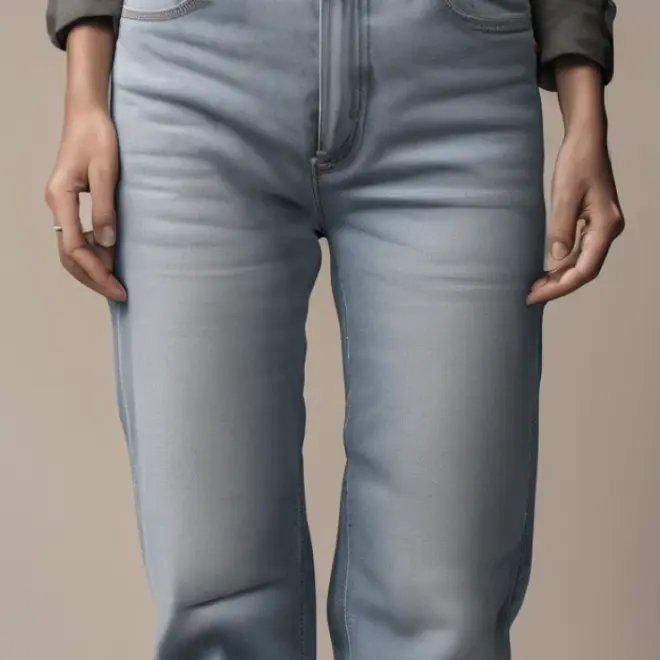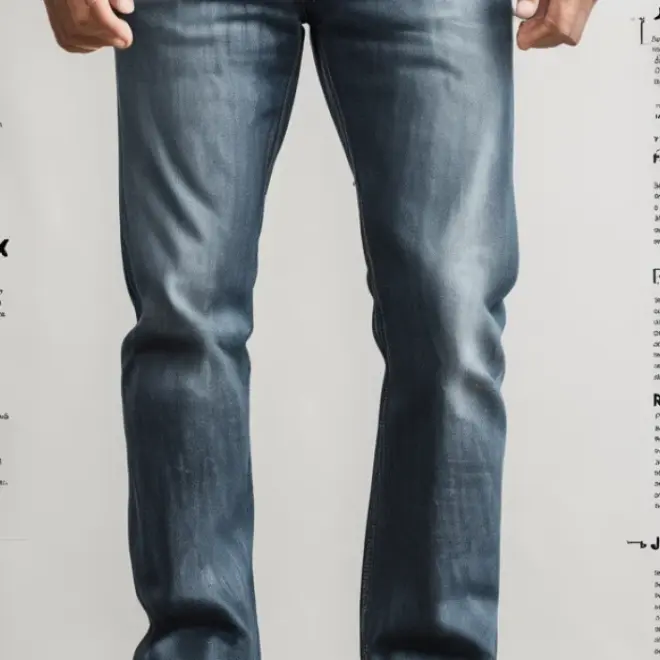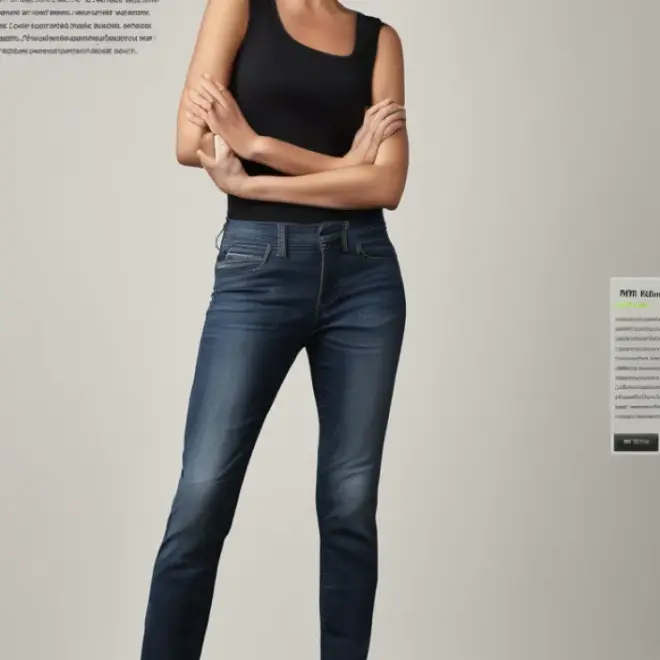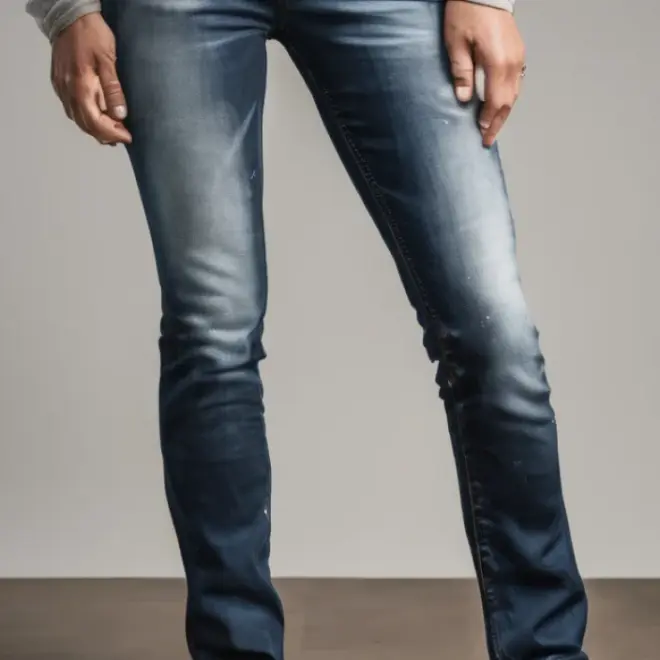Quick Summary
Learn how to hem boyfriend jeans using only air drying. This simple method preserves the denim’s texture and prevents shrinkage, giving you perfectly fitting, casual jeans without a dryer. Follow these easy steps for a professional-looking result at home.
Boyfriend jeans are a wardrobe staple for a reason: they’re comfy, stylish, and effortlessly cool. But what happens when they’re a little _too_ cool, pooling around your ankles? Hemming them can seem daunting, especially if you’re worried about ruining their relaxed, lived-in feel. Many hemming tutorials involve heat, which can shrink denim unpredictably and even dull its original character. What if you could get that perfect length without any laundry appliances at all? This guide will show you exactly how to hem your boyfriend jeans, focusing on an air-dry-only method that preserves their true denim charm. We’ll break down every step so you can achieve a sharp, clean hem with confidence, no dryer required.
Why Air Dry Only for Hemming Jeans?

When you’re looking to hem your favorite pair of boyfriend jeans, sticking to an air-dry-only method is a smart move for several key reasons. The primary benefit is controlling the denim’s behavior.
- Preserves Original Texture: Heat from a dryer can make denim stiff or distort its natural texture. Air drying allows the fabric to retain its soft, relaxed feel, crucial for that beloved boyfriend jean look.
- Prevents Shrinkage: Denim, especially raw or unwashed denim, can shrink significantly when exposed to heat. By avoiding the dryer, you eliminate the risk of your freshly hemmed jeans becoming too short or tight.
- Maintains Denim’s Character: The specific weave and finish of your jeans contribute to their unique look and drape. Air drying respects these qualities, ensuring your hemmed jeans still look and feel authentic.
- Energy Efficiency: Skipping the dryer is an environmentally friendly choice and saves on your electricity bill. It’s a simple, sustainable approach to clothing care.
- Gentle on Threads: While not a primary concern for most casual hemming, for very delicate or specific construction, avoiding high heat can be gentler on stitching over time.
Essentially, an air-dry-only approach is about maintaining the integrity and intended aesthetic of your boyfriend jeans throughout the hemming process.
Essential Tools for Hemming Boyfriend Jeans
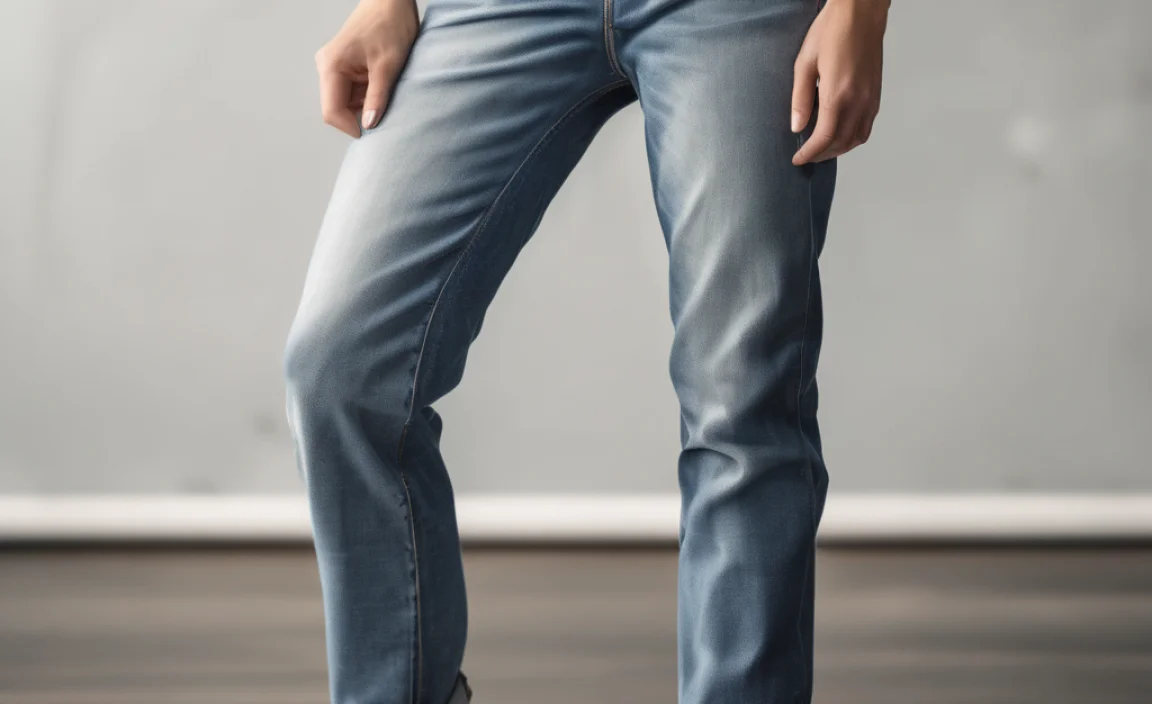
Before you start cutting, gather these simple tools. Having everything ready makes the process smooth and efficient. You don’t need a sewing machine for this method, just a few basic supplies.
- Fabric Scissors: Sharp scissors designed for fabric are crucial. Dull scissors can snag and create a jagged edge that’s difficult to work with.
- Fabric Measuring Tape: A flexible measuring tape will help you get accurate and even measurements.
- Fabric Chalk or Pen: This allows you to mark your cut line directly on the denim without making a permanent mark.
- Straight Pins: Essential for holding the folded hem in place before you sew.
- Sewing Needle: A standard sewing needle is all you need for hand-sewing.
- Thread: Choose a strong thread that matches your jeans as closely as possible. For a classic denim look, a slightly thicker, durable thread is ideal.
- Iron and Ironing Board (Optional but Recommended): While we’re air-drying the final hem, an iron can help create crisp folds beforehand for a neater finish.
- A Flat Surface: A table or clean floor is needed for laying out your jeans and making precise measurements.
Step-by-Step Guide: How to Hem Boyfriend Jeans (Air Dry Only)
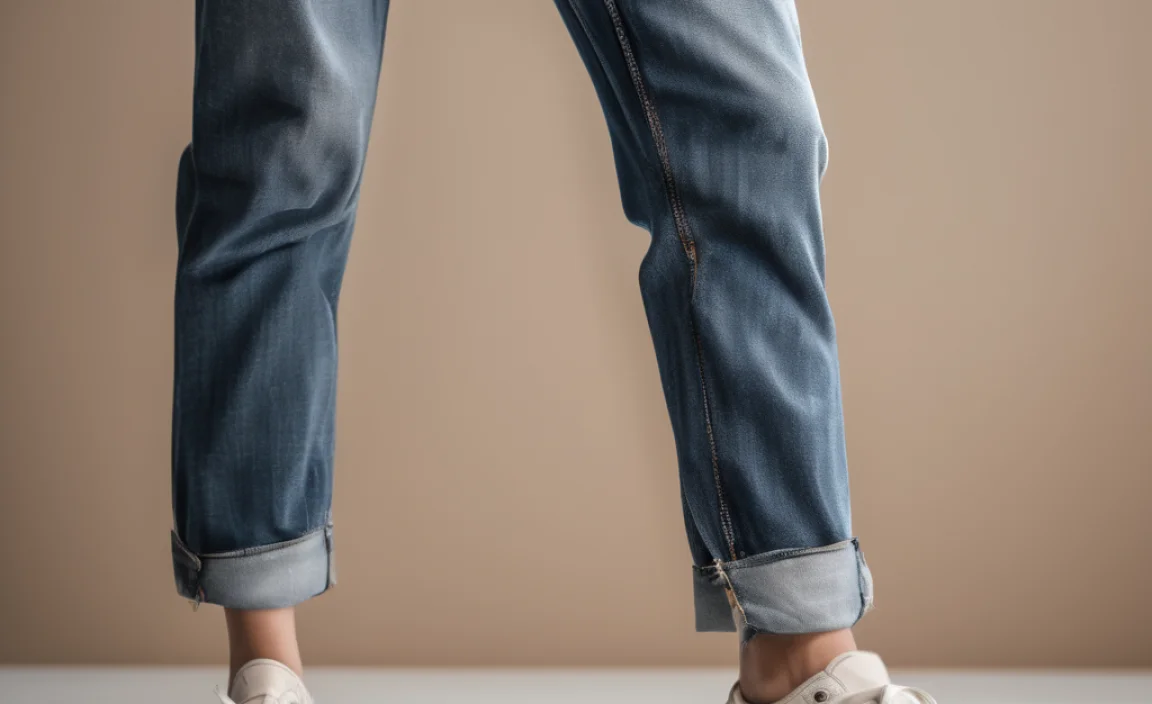
Hemming boyfriend jeans is simpler than you might think, especially when focusing on an air-dry finish. Follow these steps to achieve a perfectly tailored look.
1. Prepare Your Jeans
Start by laying your boyfriend jeans on a flat surface. Smooth out any wrinkles to ensure your measurements are accurate. It’s a good idea to wash and dry your jeans before hemming if you usually machine wash and dry them. This way, you’re hemming them at their final size. If you intend to never use a dryer again for these jeans, skip the dryer step in the pre-wash.
2. Determine Your Desired Length
Put on the jeans and stand in front of a mirror. Decide where you want the hem to fall. For boyfriend jeans, a common and stylish length hits at or just above the ankle bone. Pin them temporarily at this length to get a feel for it. Make sure to check both legs are even.
3. Mark Your Hem Line
Take the jeans off and lay them flat again, ensuring the legs are aligned. This is crucial for an even hem. Measure from the crotch seam down to where you want the final hem to be. Mark this point on the inseam (the inner leg seam) and the outseam (the outer leg seam) of one leg. Then, use your fabric chalk or pen to draw a line connecting these marks, parallel to the original hem. This line is where you’ll cut. Double-check with your measuring tape that this line is straight and at the same height all around the leg.
Tip: Leave an extra 1-2 inches below your marked cutting line. This allowance is for folding the hem, creating a clean finish without needing to re-hem the raw edge.
4. Cut Off the Excess Fabric
Using your sharp fabric scissors, carefully cut along the marked line. Go slowly and steadily to ensure a straight cut. Once you’ve cut one leg, use it as a guide to mark and cut the second leg. Lay the first leg perfectly on top of the second and cut through both simultaneously to guarantee symmetry.
5. Prepare the Fold for a Clean Hem
Now, fold the raw edge of the cut leg upwards by about 1/2 inch towards the inside of the jeans. Press this fold with an iron if you’re using one for a sharper crease. This creates a clean edge for your final hem. Then, fold it up again by another 1/2 inch to 1 inch, depending on how wide you want your finished hem to be. This second fold encloses the raw edge. Again, an iron will help make this fold neat and crisp, but it’s not strictly necessary if you are committed to no heat whatsoever.
6. Pin the Hem in Place
Secure the folded hem with straight pins. Place pins about every 1-2 inches to keep the fabric firmly in position. Ensure the pins go through all the layers of the folded hem and the jean fabric. Make sure the hem lies flat and doesn’t pucker.
7. Hand-Sew the Hem
Thread your needle with matching thread, securing it with a knot at the end. Begin sewing along the top edge of the folded hem. Use a small, consistent stitch, like a whipstitch or a blind hem stitch. A whipstitch is simple and secure: take a small stitch through the folded edge, then a small stitch through the main jean fabric just above the fold, catching only a few threads of the outer fabric. Keep your stitches small and close together for a neat appearance. For a cleaner, less visible stitch on the outside, a blind hem stitch is ideal, where you catch only a single thread of the jean fabric and then move back to the folded edge.
External Resource: For a visual guide on different hand-sewing stitches, check out resources from reputable craft or textile education sites. For example, the Bernina USA sewing tips page offers clear explanations of various stitches, many of which are applicable to hand-sewing hems.
8. Complete Both Legs
Repeat steps 5 through 7 for the second leg of your jeans, ensuring you mirror the fold and stitching from the first leg as closely as possible. The goal is a perfectly symmetrical result.
9. Final Touches and Air Drying
Once both legs are sewn, remove all the pins. Gently shake out the jeans to remove any loose threads or chalk marks. Inspect your work for any missed stitches or unevenness. If you used an iron to press your folds, this step is complete. If not, your jeans are ready to air dry. Hang your freshly hemmed boyfriend jeans on a clothesline, a hanger, or lay them flat to dry. Avoid any heat sources. Allow them to dry completely, which may take 24-48 hours.
Hemming Options for Boyfriend Jeans

While the basic method above provides a clean, finished hem, boyfriend jeans can often embrace a more casual, undone look. Here are a few variations to consider, all achievable with an air-dry-only approach.
1. The Classic Fold-Over Hem
This is the method detailed above. It involves folding the raw edge up twice and stitching it down. It’s neat, durable, and looks like a professional finish.
- Pros: Very durable, neat finish, prevents fraying.
- Cons: Can add a slight bulk to the hem, may look too polished for some extreme casual styles.
2. The Single Fold Raw Hem
For this look, you cut your jeans to the desired length, fold the raw edge up once by about 1/2 inch, and stitch it down. The raw edge is visible on the outside of the fold, giving a slightly more casual, unfinished vibe.
- Pros: Casual, easy to achieve, less bulk.
- Cons: The raw edge may fray further over time (which can be part of the aesthetic), slightly less durable than a double fold.
3. The “Cut-Off” Raw Hem
This is the most casual option. You simply cut your jeans to the desired length and leave the edge completely raw. No folding, no stitching. The edges will naturally fray over time.
- Pros: Ultra-casual, minimalist, requires almost no sewing skill for the cutting itself.
- Cons: Will fray significantly (if this isn’t desired), can look sloppy if not done intentionally, the leg opening might widen dramatically.
When using the “cut-off” method, consider using Fray Check or a similar fabric sealant on the inside of the cut edge to control excessive fraying and keep the leg opening from becoming too wide.
FAQ: Hemming Boyfriend Jeans with Air Dry Only
Here are some common questions people have when trying to hem their jeans without a dryer.
Q1: How much length should I leave for hemming?
A1: It’s wise to add at least 1.5 to 2 inches beyond your final desired length. This gives you enough fabric for a double fold (about 1 inch total for the fold) and a small seam allowance. You can always trim more if needed.
Q2: Can I hem my jeans without sewing?
A2: Yes, you can use fabric glue or hemming tape for a no-sew hem. However, for boyfriend jeans where durability and maintaining the denim’s texture are key, hand-sewing is generally recommended for a long-lasting and authentic look. Air-drying is still crucial for these methods.
Q3: My jeans look uneven after hemming. How can I fix this?
A3: The best way to prevent unevenness is to align the legs perfectly when measuring and cutting. To fix it, measure and trim again, or try to adjust the fold slightly on the longer side. Sometimes, wearing them around the house for a bit can help settle the fabric before a final adjustment.
Q4: Will my jeans shrink if I don’t use a dryer?
A4: If you washed your jeans to their final size before hemming, then no, they won’t shrink further as you air dry them. If you hemmed unwashed jeans and then washed them, they might shrink unpredictably. The air-dry-only hemming method aims to prevent shrinkage during the hemming process itself.
Q5: How do I make the hem look intentionally frayed?
A5: To achieve an intentional raw, frayed hem, cut your jeans to the desired length and then wash and wear them. The constant friction will cause the threads to unravel. Alternatively, you can gently snip vertical threads along the cut edge with small scissors or a seam ripper over time. Be patient, as this takes a few wears and washes.
Q6: What kind of needle and thread should I use for denim?
A6: For hand-sewing denim, use a stronger needle, like a denim needle (sometimes called a jeans needle), if you have one, though a sturdy regular needle can work. Use a strong polyester or cotton-poly blend thread that matches your jeans. A slightly thicker thread will provide more durability.
Maintaining Your Hemmed Jeans
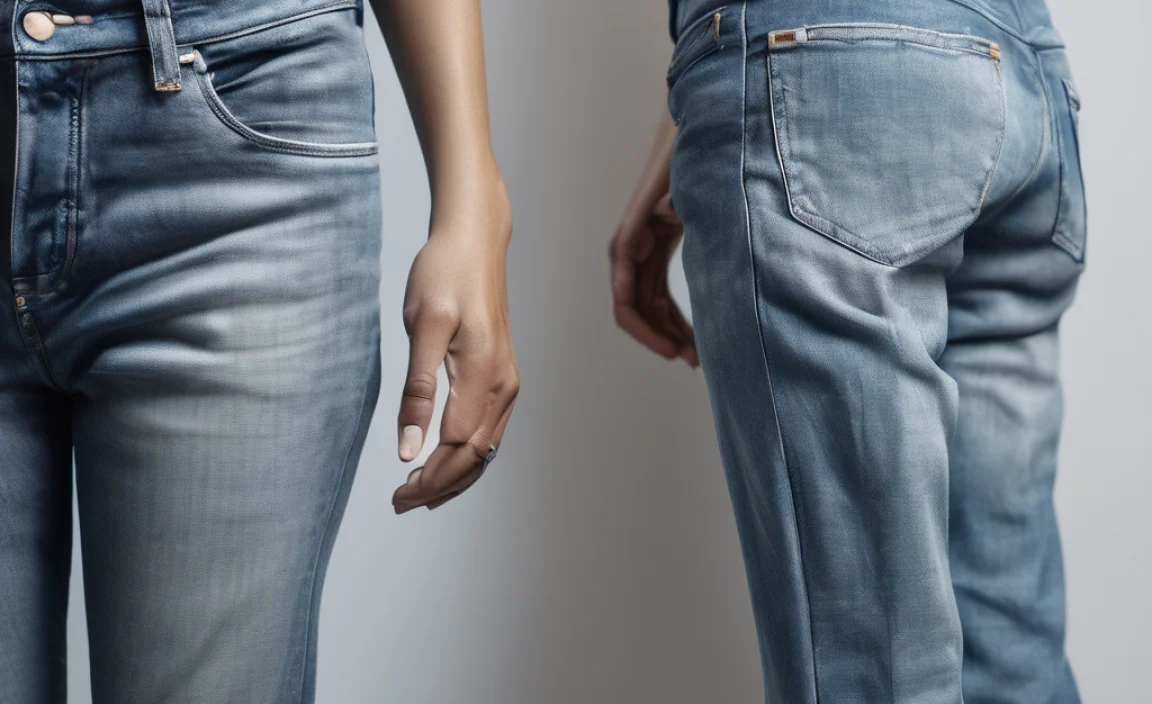
Keeping your boyfriend jeans looking great after hemming is straightforward, especially with your commitment to air drying. The goal is to preserve that comfortable, casual feel and prevent unnecessary wear and tear.
- Washing: When it’s time to wash your jeans, turn them inside out. This protects the outer fabric and seams from abrasion. Stick to cold water washes, as hot water can cause more shrinking and damage over time. Use a mild detergent.
- Detergent Choice: Opt for detergents free of harsh bleaches or optical brighteners, as these can fade denim colors.
- Air Dry is Key: As established, always air dry your jeans. Hang them on a sturdy hanger or lay them flat to prevent stretching or distortion in odd places. Ensure there’s good air circulation around them.
- Spot Cleaning: For minor stains, try spot cleaning with a damp cloth and a tiny bit of mild soap instead of a full wash. This prolongs the life of the denim and saves water.
- Storage: Fold your jeans neatly when storing them to avoid creases and keep your drawers or shelves tidy.
By following these simple care tips, your freshly hemmed boyfriend jeans will remain a favorite in your wardrobe for years to come, retaining their perfect fit and authentic style.
Conclusion
Hemming your boyfriend jeans doesn’t have to be a complicated or drying-intensive chore. With a few basic tools and this straightforward air-dry-only method, you can achieve a perfectly tailored pair of jeans right at home. By focusing on precise measurements, careful cuts, and neat hand-sewing, you’ll transform ill-fitting denim into your new favorite staple. Remember, protecting the unique texture and character of your boyfriend jeans is paramount, and an air-dry approach ensures their laid-back charm remains intact. Now go forth and confidently customize your denim to match your style!



